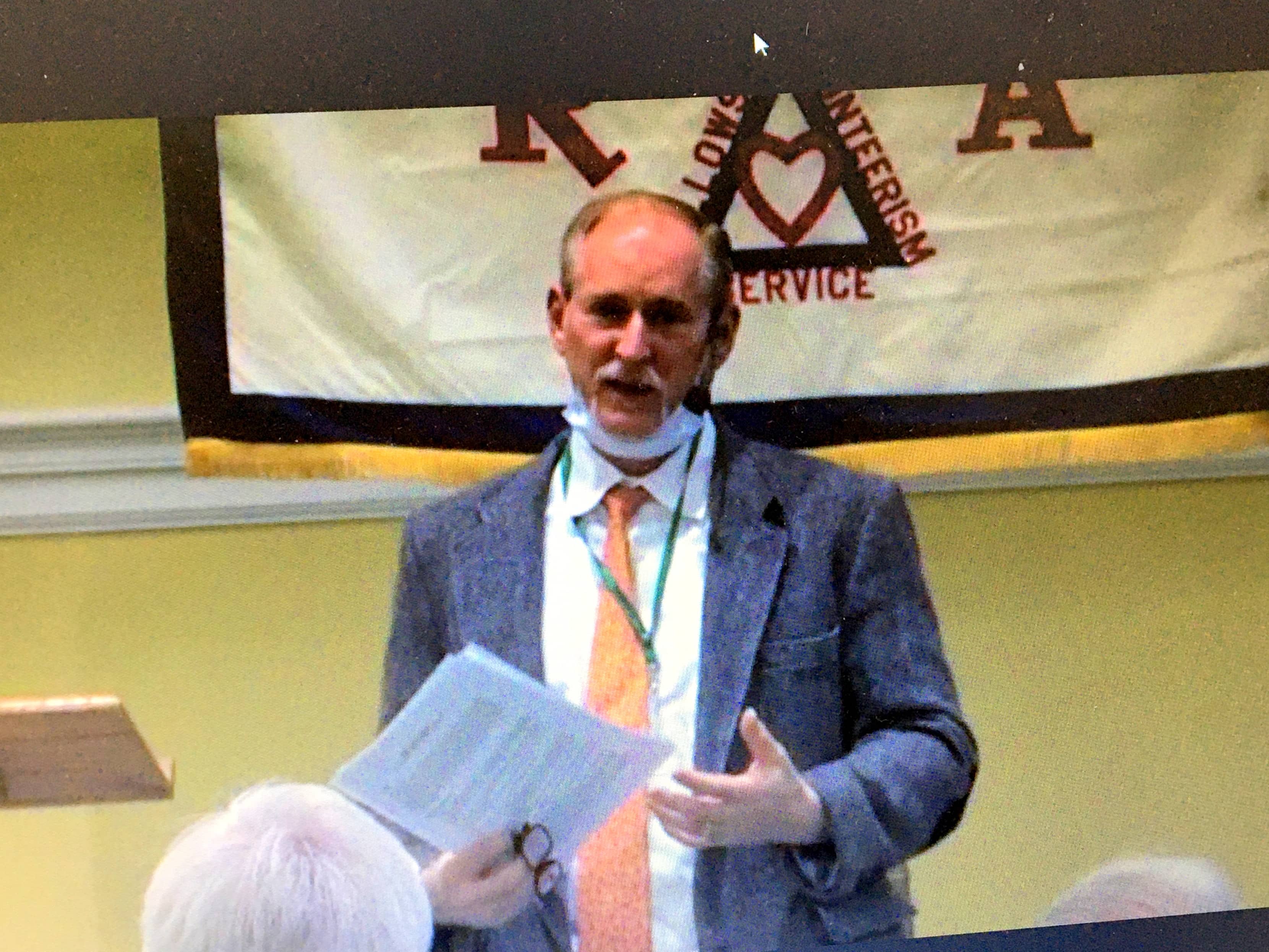

Greenwich Superintendent of Parks and Trees and Tree Warden Dr. Greg Kramer was this Wednesday’s speaker before the Retired Men’s Association, and he brought exciting news of a major inventory in the works that will document all the trees in Greenwich.
“We’re going to be working with GIS on this – right now GIS does a flyover every three years. They capture all the topography of the town but also each tree is designated a green spot…And we’re going to have a company go out and do a true evaluation of these trees so we understand their health, species diversity… And look at it and say, okay, these three trees need to be removed but there’s space for five more. But there’s already four or five species of oaks so let’s diversify…”
Kramer’s approach will be to focus on zip codes. “We may have to break it down into smaller sections within zip codes, but we’re kind of looking at a five year cycle where the first year will start at one part in town and try and get through that whole section. And we want to share that map with the public. Anybody in the town will be able to go and look at this map and say oh wow, I live in Byram, let me see and all those dots will actually represent the true tree.”
Kramer also reported the planting of three rare trees in the Pinetum. “If anybody wants to walk in the Pinetum if you see little, small trees in cages, their Latin name is Teresa Taxafolia – the common name unfortunately is not very glamorous, it’s called stinking cedar. Because the resins and the fruit of the seed actually smells like turpentine, which isn’t that bad. But it is North America’s most endangered conifer species.”
Kramer gave an intriguing backstory to those stinking cedars. Having done his master’s research at Pinetum founder Colonel Montgomery’s Miami Montgomery Botanic Center he’d become acquainted with tropical conifers, and thus the stinking cedar. Fast forward to two years
ago, he tells, “and I was lucky to have been part of the scientific research with E.O. Wilson and some other really heavy hitters in the science world come together to pay homage to this species. They have beautiful ones at the Biltmore in North Carolina. So, we have a critically endangered species here in Greenwich. We can’t do any propagation without approval because they track each tree individually because they’re so rare. That’s how that’s how endangered they are. And the fact that we got three of them I think is really exciting.”
Another unusual confer planted at the Pinetum he reported were monkey puzzle trees. “It’s a really cool old family of conifer only found in the southern hemisphere. The actual needle and needles are spines. That’s why they call it monkey puzzle tree. They produce this really cool, interesting form until they get to be a real old age and then they kind of flat top and look really stoic and beautiful.”
Also, on his desk is planned restorations for the Pinetum, Pomerantz, and Tuchman properties. “I’ve put in some capital money requests to start looking at some strategic plans…so we’re chipping away at that.” And in partnership with the Greenwich Tree Conservancy he reports that over 200 trees of the planned 500 have been planted. “So, we’re far exceeding plantings, then what’s being removed.
In the Q&A RMA member Hollister Sturges shared concern over “very tall slender pine trees that create a border between Putnam Park and Christ Church and the Tomes Higgins House. And they sway in the wind. I know they can reach some apartments. Can they be topped to keep them there? Or do they have to be taken down?” Kramer responded, “If they’re growing close together trees graft roots, they almost act as one group of trees which actually adds to the strength of the trees.” But Kramer would need to assess them. But, as to topping them, he added, “I would say probably the best thing at that point we just take them out.”
To access the RMA December 1 Zoom talk with Dr. Gregory Kramer with the following Q&A visit www.greenwichrma.org or email info@GreenwichRMA.org





